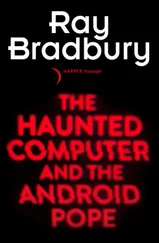To understand how and why Microsoft emerged victorious in its competition with Digital Research, it is necessary to know something about the way each company evolved. When Microsoft was introduced in this story, it was in reference to the pioneering days of the Altair. But Gates and Allen, despite their early fame among homebrewers and continued success in turning microcomputer software into a business rather than a hobby, were far from the only software experts who existed in the Altair days. And MITS wasn’t the only pioneering company whose former employees or associates went on to launch their own software empires. Gary Kildall, before he founded Digital Research, was building microcomputers back in the days when Intel, the inventor of the microprocessor, was still trying to figure out what to do with this new chip. In fact, Kildall created a microcomputer operating system nearly two years before the first Altair existed.
Kildall was an accomplished programmer. In the early 1970s he was a computer science professor at the Naval Postgraduate School in Pacific Grove, California—an idyllic little coast town two hours from Silicon Valley. Kildall was one of the few people in the “real” computer world who had been drawn to the newly available 4004 chip. Legend has it that in 1972 he responded to a note on a bulletin board that said: “Microcomputer—$25.” It wasn’t a computer, of course, but the 4004. Kildall was fascinated and went as far as writing an IBM mainframe program that emulated the 4004’s instruction set. But only Intel then had the equipment for connecting his mainframe language to an actual chip. So he started visiting the microprocessor development laboratory at Intel and soon procured a contract to produce a microprocessor version of one of the mainframe languages, known as PL/I. It was in his attempt to shoehorn the complex language into the limited memory capacity of the 4004 that Kildall first started creating the rudiments of a microprocessor operating system.
Operating systems on mainframes were massive projects that often took dozens of programmers several years to write. These huge programs also used far more computer resources than a tiny microprocessor could ever provide. So Kildall set out to produce a very simple, extremely compact control program. As microprocessor capabilities expanded with every new chip to hit the market, his program expanded to take advantage of those capabilities. Eventually, his creation evolved into the operating system he called Control Program for Microcomputers— CP/M for short. Intel wasn’t in the software business, so it had no objections when Kildall decided to market his operating system.
Kildall and a hardware-oriented friend in San Francisco actually built their own homebrew microcomputer more than a year prior to the Altair announcement. When MITS proved that there was a growing market for hobbyist microcomputers, Kildall turned his microcomputer programming efforts into one of those whimsically named companies that proliferated in the 1975-77 era— Intergalactic Digital Research.
In 1977, when software publishing became less of a hobby and more of a business, the “Intergalactic” part of the name was dropped. But Kildall refused to move his operation to Silicon Valley—Digital Research remained in Pacific Grove. Kildall’s wife, Dorothy McEwen, took over running the company while Kildall concentrated on programming, and in 1977 they negotiated their first big contract for CP/M. One of MITS’ early rivals, the IMSAI Corporation, sent its marketing director, Seymour Rubinstein (who later founded Micro-Pro), to negotiate with Digital Research. IMSAI paid $25,000 for an IMSAI version of the operating system.
Without getting into more technical detail about how microchips operate, it can be said that CP/M dominated the market for operating systems when the successors to the early Intel chips began to be used for nonhobbyist computers (the successors to the Altair, which didn’t require assembly of electronic components or extensive knowledge of computer hardware). Almost all of the computers based on the highly popular Z-80 chips used CP/M, and it looked like Digital Research had a virtual monopoly on microcomputer operating systems—until IBM and Microsoft came along.
The dramatic change in fortunes for both Microsoft and Digital Research began in July 1980, when Bill Gates received a call from someone at IBM who wanted to make an appointment to talk with him. “Fine,” Gates replied. Did IBM want to set up a meeting the following week? “No,” the IBM representative said—they wanted to fly up from Boca Raton, Florida, that afternoon. That put the young software entrepreneur in a difficult position, as he had a conflicting appointment already set up. Gates made the fateful decision to call Ray Kassar, CEO of Atari, to change their appointment. It took a lot of nerve to postpone a meeting with Ray Kassar himself. But if anything was bigger than a potential deal with Atari, it was a potential deal with IBM.
Gates and Allen called in reinforcements in the person of Steve Ballmer, whom Gates had known from Harvard. Ballmer had marketing experience and a business education. The three of them put their heads together and decided that IBM was undoubtedly getting ready to make its long-awaited entry into the personal computer market, and that in all likelihood it wanted to negotiate a deal with Microsoft for microcomputer software.
Sure enough, the IBM technical representatives asked a lot of questions about microcomputers—after the company’s legal people made the Microsoft group sign their famed nondisclosure agreements—but they never actually came out and told Microsoft what they were up to. At least not at the first meeting.
A month later, IBM showed up again. This time it had an even heftier nondisclosure agreement. But it also had something to disclose—its plans to develop a personal computer. Gates wasn’t terribly pleased with IBM’s initial design for its machine. He thought that IBM would be making a big mistake if it used the kind of 8-bit microprocessor chips that were then dominating the personal computer industry. He felt that
Microsoft would be able to provide far superior software if IBM chose to use a 16-bit chip instead. It was an amazing scene. Here was this young fellow, a college dropout in his early twenties, telling IBM how to go about designing a computer. Even more amazing was the fact that IBM listened.
When IBM told Microsoft that it had decided on the 8086 chip—which is something of a halfway step toward a 16-bit processor, as Gates had suggested—Paul Allen talked to someone he knew who had already created an operating system for that very chip. The colleague was Tim Patterson of Seattle Computer Products. Gates, Allen, and Ballmer proposed to Patterson that Microsoft adapt Patterson’s existing program for use with the PC. They didn’t have any time to waste, according to the tight production schedule laid out by IBM, and it would take far less time to modify an existing operating system than to create one from scratch. Patterson went along with the proposal, and Gates and Allen flew to Boca Raton to talk to IBM about their plan.
The young hotshots from Bellevue, Washington, were questioned closely by IBM’s technical experts, and by the end of the day it became clear that IBM was taken with the program and with Gates and Allen’s presentation of it. But they had another advantage going for them, aside from their technical expertise and business acumen: an unexpected personal contact with John Opel, IBM’s new chairman. At lunchtime, Phil Estridge, IBM’s project manager for the PC operation, told Gates that Opel had asked if Microsoft was “Mary Gates’s boy’s company.” It turned out that Bill’s mother had served with Opel on the board of directors of the United Way.
Читать дальше










